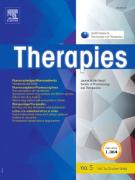Un outil d’adaptation individualisée des posologies de médicaments chez le patient adulte obèse - 20/10/23
An online tool to personalize the drug-doses for obese adults
Résumé |
Contexte |
Entre 1975 et 2014, le nombre de personnes souffrant d’obésité a triplé, jusqu’à atteindre 17 % de la population adulte en France et plus de 35 % aux États-Unis. L’obésité se définit par un indice de masse corporelle (IMC)>30kg/m2 et se caractérise par une accumulation importante de tissu adipeux responsable de l’augmentation du poids. Cette accumulation entraîne des changements physiologiques capables de modifier la pharmacocinétique des médicaments pouvant conduire à l’administration de doses inappropriées. Pour cette raison, certains des ajustements posologiques significatifs sont nécessaires chez le patient obèse. Cependant, les données sur ces adaptations sont peu accessibles et parfois complexes à mettre en œuvre en pratique.
Objectif |
Proposer un nouvel outil en ligne permettant de calculer un ajustement de la dose d’un médicament à administrer à un patient obèse.
Méthodes |
(i) réalisation d’une recherche bibliographique extensive selon la méthodologie PRISMA ; et (ii) développement d’un outil en ligne proposant une dose ajustée pour les patients obèses.
Résultats |
Dans un premier temps, 49 revues de la littérature ont été évaluées concernant l’adaptation de la posologie des médicaments chez les patients obèses puis, dans un deuxième temps, 319 articles ont été sélectionnés. Parmi ces 319 articles, 204 ont été inclus dans la base de données afin de fournir des informations d’adaptation de posologie pour 84 molécules et modalités d’administration incluant des antibiotiques, des antifongiques, des anticoagulants ou encore des cytotoxiques. Cette base de données a été rendue accessible à travers le développement d’un calculateur utilisable sur le site internet Adapt’Obese. Ainsi, grâce au sexe, à la taille et au poids du patient obèse, l’outil propose au praticien une adaptation personnalisée du médicament à administrer au patient obèse.
Perspectives |
D’autres principes actifs seront ajoutés prochainement, et des améliorations des fonctionnalités sont envisagées dans le but d’adapter les posologies chez le patient obèse, comme cela peut être réalisé chez les patients insuffisants rénaux.
Il testo completo di questo articolo è disponibile in PDF.Summary |
Background |
Between 1975 and 2014, the number of people suffering from obesity tripled, reaching 17% of the adult population in France and more than 35% in the United States. Obesity is defined by a Body Mass Index (BMI)>30kg/m2 and characterized by a significant accumulation of adipose tissue responsible for the increase in weight. This accumulation leads to physiological changes capable of modifying the pharmacokinetics of drugs, which can lead to the administration of inappropriate doses. For this reason, some significant dosage adjustments are necessary for obese patients. However, data on these adaptations are not easily accessible and sometimes complex to implement in practice.
Aim |
To perform a new online tool allowing to calculate and propose an adjusted dose of a drug that should be administered to an obese patient.
Method |
(i) carrying out an extensive bibliographic research according to the PRISMA methodology; and (ii) the development of a new website site proposing an adjusted dose for obese patients.
Results |
Firstly, 49 reviews concerning the dose adaptation have been evaluated and, secondly, 319 articles have been selected. Among them, 204 articles have been included in the database to justify the adjusted dose of 84 drugs and administration methods including antibiotics, antifungals, anticoagulants or even cancer drugs. This database is available online through a calculator on the website named Adapt’Obese. Thus, with the sex, height and weight of an obese patient, Adapt’Obese proposes a personalized and adjusted dose of the drug to administer.
Perspectives |
Other drugs will be added soon, and functional improvements are planned, with the aim of adapting the dosages in obese patients, as for patients with renal insufficiency.
Il testo completo di questo articolo è disponibile in PDF.Mots clés : Obésité, Pharmacocinétique, Adaptation de dose, Ajustement posologique, Outil en ligne
Keywords : Obesity, Pharmacokinetics, Drug-dose adjustment, Dosage adjustement, Online tool
Mappa
Benvenuto su EM|consulte, il riferimento dei professionisti della salute.
L'accesso al testo integrale di questo articolo richiede un abbonamento.
Già abbonato a @@106933@@ rivista ?


